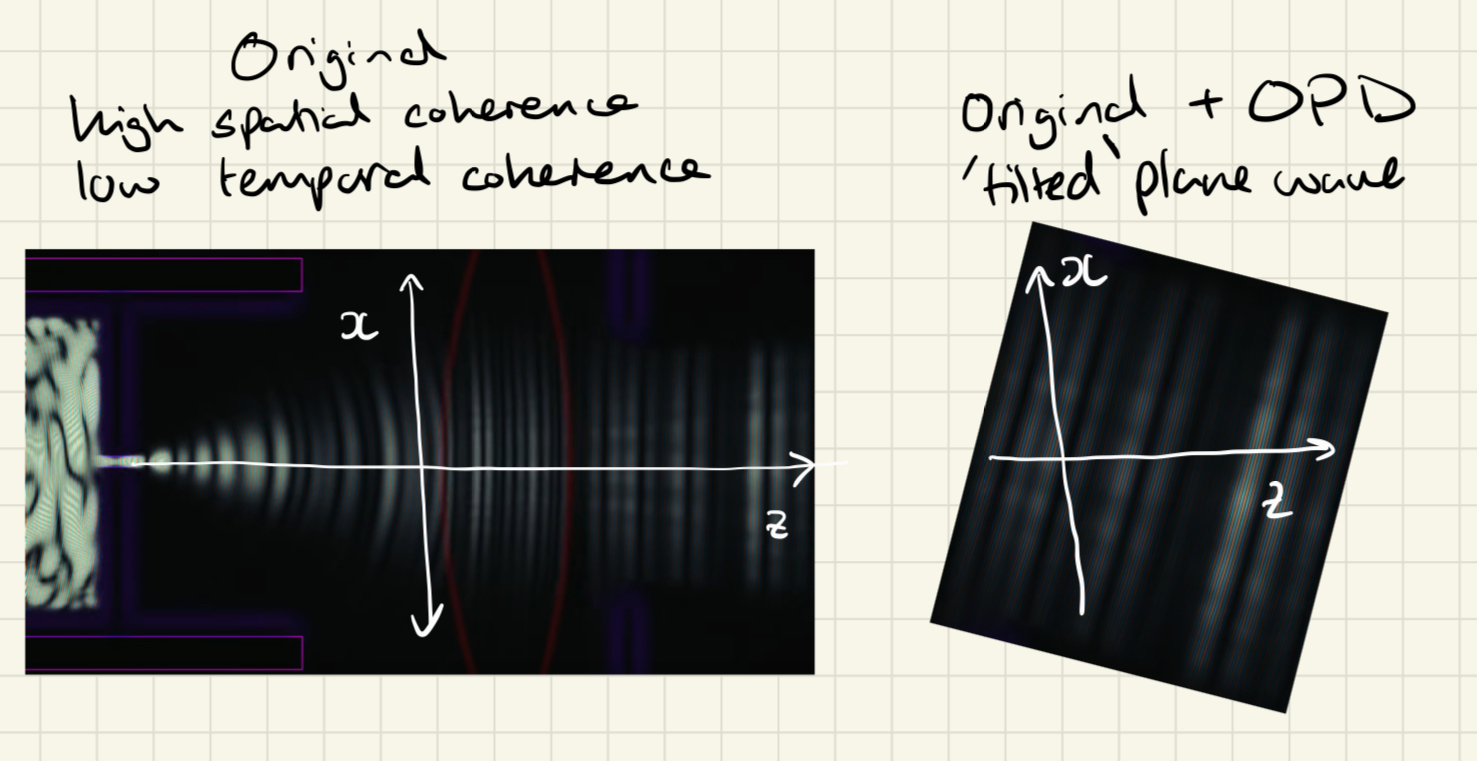I'm working on a version of coherance scanning interferometry (CSI) - very similar optically to a Michelson interferometer with a sample and reference beam combined to produce an interferance pattern - and in my setup would like to introduce a linear optical path difference across one spatial dimension (x) in my reference beam.
The illumination would be a light emitting diode (LED) with a full width half maximum (FWHM) of ~25nm. With high spatial coherence (that I would like to conserve) but low temporal coherance.
Is there a way to do this? I can only think to use a stepped reference mirror - but these can get very expensive and I'm sure there is a better way.
Essentially the question boils down to: how do you introduce an optical path difference in x to a low (temporal) coherence plane wave travelling in z, while maintaining the spatial coherence? Is this possible?
 Image adapted from Hugens Optics, Youtube : https://www.youtube.com/watch?v=yMeRAg61_Wc
Image adapted from Hugens Optics, Youtube : https://www.youtube.com/watch?v=yMeRAg61_Wc
Thanks in advance :)
